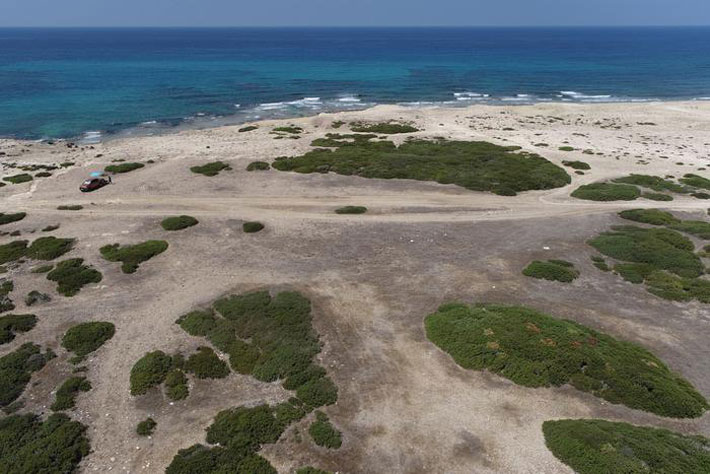 ADELAIDE, AUSTRALIA—According to a statement released by Flinders University, paleolithic hunter-gatherers may have been drawn to the Mediterranean island of Cyprus thousands of years earlier than previously thought. It had been argued that hunter-gatherers only traveled to inhospitable islands in the eastern Mediterranean because mainland coastal areas were flooded by rising sea levels. But by combining archaeological data and climate and demographic models, Corey Bradshaw of Flinders University and his colleagues think Cyprus may have been an attractive destination to paleolithic peoples. Dating of the 10 oldest sites on the island suggest the first humans landed there between 14,257 and 13,182 years ago. Climate modeling indicates that the temperature and rainfall on the island at the time would have been able to support large hunter-gatherer populations. Meanwhile, demographic models suggest that these populations arrived in two or three waves of migration over a period of less than 100 years. “This settlement pattern implies organized planning and the use of advanced watercraft,” Bradshaw added. Then, the researchers suggest, over a period of about 300 years, or 11 generations, the population of Cyprus expanded to between 4,000 and 5,000 people. To read about a city on Cyprus that was a major hub of the copper trade some 3,500 years ago, go to "In the Time of the Copper Kings."
ADELAIDE, AUSTRALIA—According to a statement released by Flinders University, paleolithic hunter-gatherers may have been drawn to the Mediterranean island of Cyprus thousands of years earlier than previously thought. It had been argued that hunter-gatherers only traveled to inhospitable islands in the eastern Mediterranean because mainland coastal areas were flooded by rising sea levels. But by combining archaeological data and climate and demographic models, Corey Bradshaw of Flinders University and his colleagues think Cyprus may have been an attractive destination to paleolithic peoples. Dating of the 10 oldest sites on the island suggest the first humans landed there between 14,257 and 13,182 years ago. Climate modeling indicates that the temperature and rainfall on the island at the time would have been able to support large hunter-gatherer populations. Meanwhile, demographic models suggest that these populations arrived in two or three waves of migration over a period of less than 100 years. “This settlement pattern implies organized planning and the use of advanced watercraft,” Bradshaw added. Then, the researchers suggest, over a period of about 300 years, or 11 generations, the population of Cyprus expanded to between 4,000 and 5,000 people. To read about a city on Cyprus that was a major hub of the copper trade some 3,500 years ago, go to "In the Time of the Copper Kings."
Study Reevaluates the Peopling of Paleolithic Cyprus
